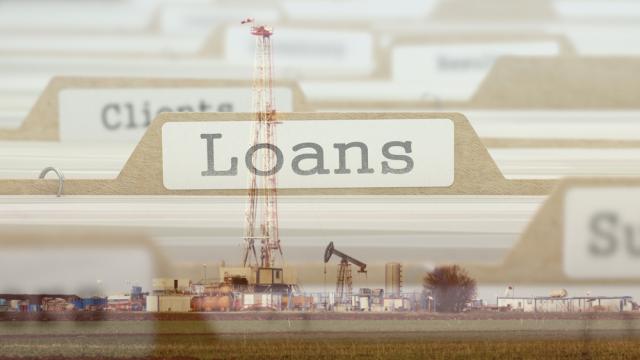
(Source: Shutterstock.com/HartEnergy.com)
Chesapeake Energy Corp., the natural gas giant laden with nearly $10 billion in debt, said Dec. 4 it is working with a group of bankers for a loan of up to $1.5 billion.
The lenders arranging the secured first lien, last out 4.5-year term loan facility are JPMorgan Chase Bank, Morgan Stanley Bank, Bank of America and MUFG Bank, the Oklahoma City-based company said Dec. 4. Among other customary conditions, the loan is subject to receipt of commitments from lenders as well as negotiation and execution of definitive loan documents.
Chesapeake said it intends to use net loan proceeds to finance the tender offer and consent solicitation it announced in a separate news release Dec. 4 for unsecured notes issued by its wholly-owned subsidiaries Brazos Valley Longhorn LLC and Brazos Valley Longhorn Finance Corp. Proceeds would also go toward funding the retirement of Brazos Valley’s secured revolving credit facility.
“Chesapeake expects these transactions to improve its financial flexibility, as they will allow Brazos Valley and its subsidiaries to support Chesapeake’s current and future debt,” the company said in the release.
Shares of Chesapeake surged by more than 12% in early morning trading Dec. 4, with the price per share just over 70 cents. That’s down, however, from $2.89 a year ago as the company—like many other oil and gas players—cope with lower commodity prices and a natural gas glut.
Reuters on Nov. 13 reported that Comstock Resources Inc., owned by Dallas Cowboys’ Jerry Jones, is in talks to buy Chesapeake’s Louisiana Haynesville shale assets.
News of the loan arrangement was delivered about a month after the company warned of its ability to continue as a “going concern,” adding to fears of another potential bankruptcy in the oil and gas sector.
The company’s financial coffers have been hit by low gas prices. The Henry Hub gas spot price has not risen above an average $3 per million Btu for much of the year.
Chesapeake’s pursuit of oil assets—which resulted in its nearly $4 billion acquisition of Eagle Ford oil producer WildHorse Resource Development Corp. (now Chesapeake’s Brazos Valley asset)—strengthened its portfolio but added debt.
Oil prices, meanwhile, have not risen to levels that enable the company to quickly chop down debt. But having a higher oil production mix and lower cash costs kept its operating margin flat during third-quarter 2019 despite lower average commodity prices, the company said in November.
The loan announced Dec. 4 will come from one or more commercial banks, Chesapeake said, and be secured by the same collateral securing its existing revolving credit facility.
Recommended Reading
Marketed: BKV Chelsea 214 Well Package in Marcellus Shale
2024-04-18 - BKV Chelsea has retained EnergyNet for the sale of a 214 non-operated well package in Bradford, Lycoming, Sullivan, Susquehanna, Tioga and Wyoming counties, Pennsylvania.
Marketed: Anschutz Exploration Six Asset Package in Wyoming
2024-02-26 - Anschutz Exploration Corp. has retained EnergyNet for the sale of six AFE asset packages in Campbell County, Wyoming.
Marketed: Sage Natural Resources 34 Well Package in Tarrant, Wise Counties, Texas
2024-02-02 - Sage Natural Resources retained EnergyNet for the sale of a 34 package (ORRI) in Tarrant and Wise counties, Texas.
Marketed: Haynesville Shale 157 Well Package in Louisiana
2024-02-23 - A private seller has retained EnergyNet for the sale of a Haynesville Shale 157 well package opportunity in Bienville, Bossier, Casso, De Soto and Sabine parishes, Louisiana.
Marketed: Paloma Natural Gas Eagle Ford Shale Opportunity in Frio County, Texas
2024-02-16 - Paloma Natural Gas has retained EnergyNet for the sale of a Eagle Ford/ Buda opportunity in Frio County, Texas.

